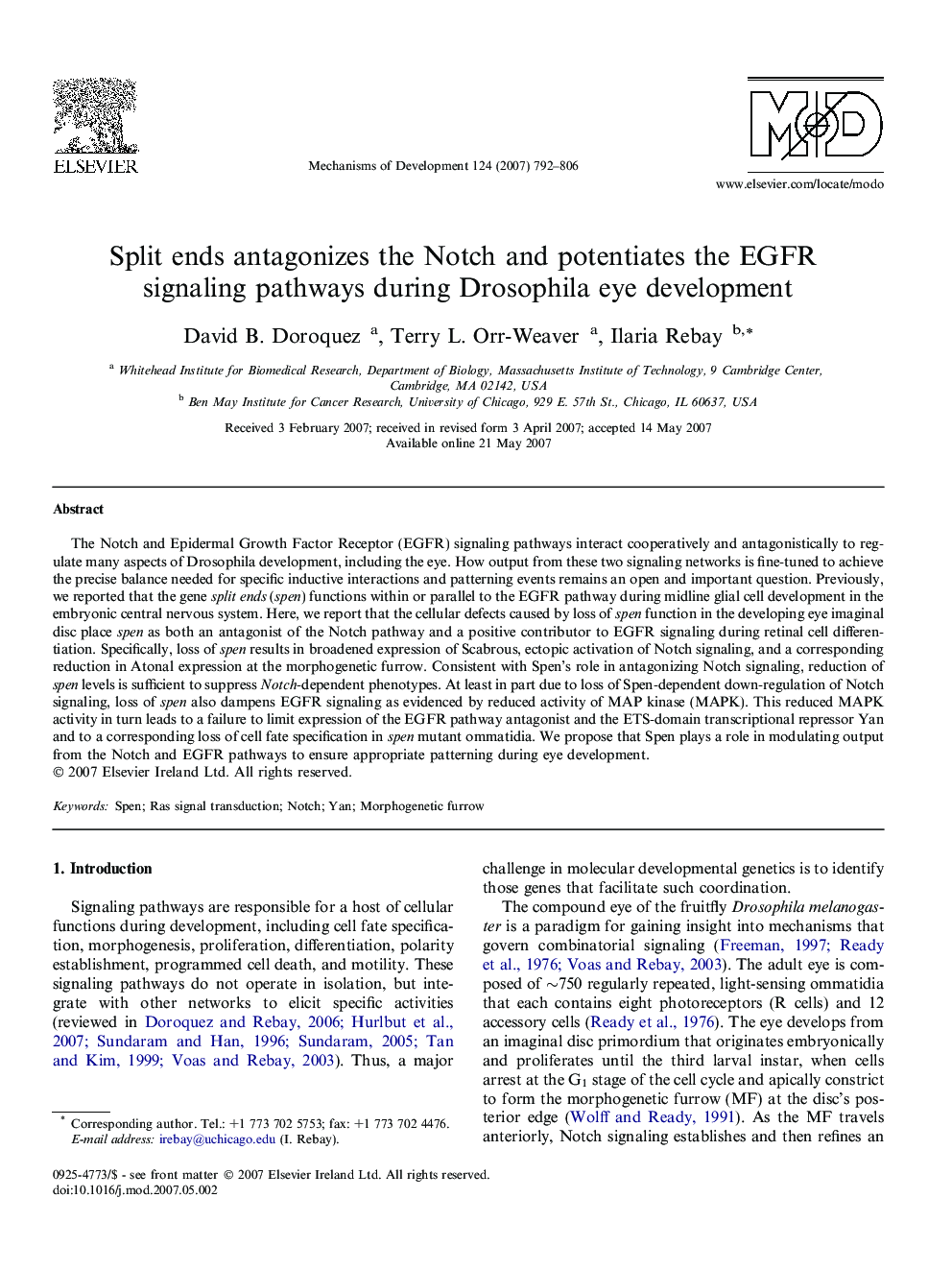| Article ID | Journal | Published Year | Pages | File Type |
|---|---|---|---|---|
| 2195044 | Mechanisms of Development | 2007 | 15 Pages |
The Notch and Epidermal Growth Factor Receptor (EGFR) signaling pathways interact cooperatively and antagonistically to regulate many aspects of Drosophila development, including the eye. How output from these two signaling networks is fine-tuned to achieve the precise balance needed for specific inductive interactions and patterning events remains an open and important question. Previously, we reported that the gene split ends (spen) functions within or parallel to the EGFR pathway during midline glial cell development in the embryonic central nervous system. Here, we report that the cellular defects caused by loss of spen function in the developing eye imaginal disc place spen as both an antagonist of the Notch pathway and a positive contributor to EGFR signaling during retinal cell differentiation. Specifically, loss of spen results in broadened expression of Scabrous, ectopic activation of Notch signaling, and a corresponding reduction in Atonal expression at the morphogenetic furrow. Consistent with Spen’s role in antagonizing Notch signaling, reduction of spen levels is sufficient to suppress Notch-dependent phenotypes. At least in part due to loss of Spen-dependent down-regulation of Notch signaling, loss of spen also dampens EGFR signaling as evidenced by reduced activity of MAP kinase (MAPK). This reduced MAPK activity in turn leads to a failure to limit expression of the EGFR pathway antagonist and the ETS-domain transcriptional repressor Yan and to a corresponding loss of cell fate specification in spen mutant ommatidia. We propose that Spen plays a role in modulating output from the Notch and EGFR pathways to ensure appropriate patterning during eye development.
